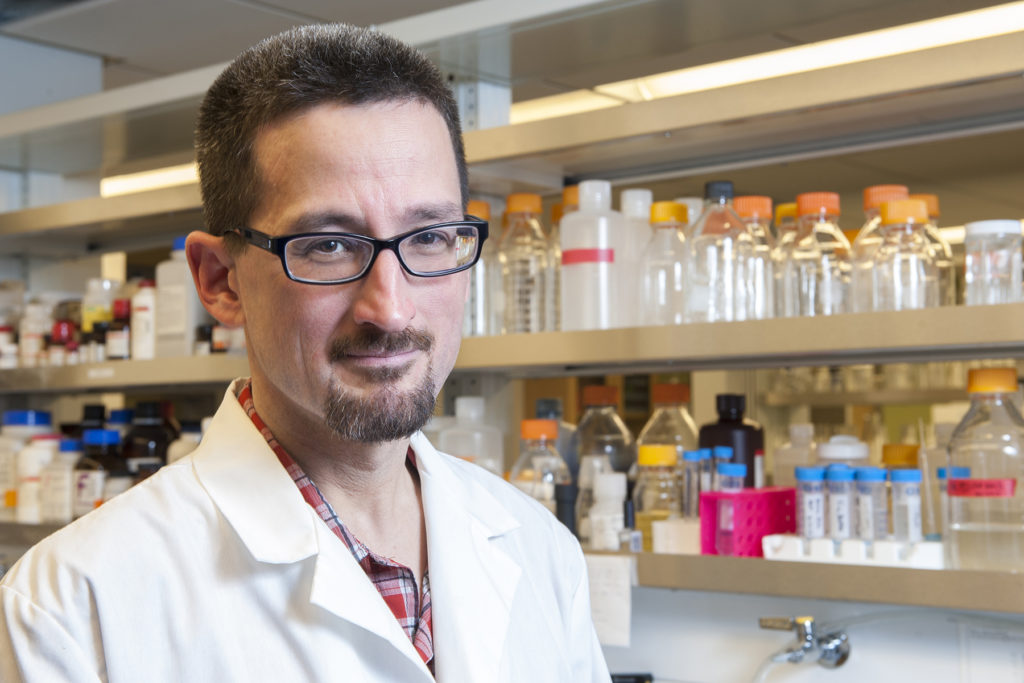Collaborating at the cellular level
Tuesday, October 26, 2021

As the incidence of diabetes continues to increase worldwide, researchers like Timothy Koh are seeking answers to the serious complications associated with the disease.
One of the biggest problems: wounds or sores on the foot for people with diabetes, instead of healing normally, can become dangerously infected and lead to limb amputation. The five-year mortality rate after amputation for people with diabetes is higher than for many cancers.
“One of the characteristics of these wounds is a chronic inflammatory response. We want to find ways to target this inflammatory response to improve healing and prevent this bad sequence of events,” said Koh, professor of kinesiology and nutrition.
Over the last 15 years, Koh’s research has focused on the role that macrophages, a type of white blood cell in the immune system, play in tissue damage, repair and regeneration. Some types of macrophages promote healing; others destroy tissue. Little is known about how this process works in wounds.
His work is translational: some studies focus at the cellular level, while other projects direct those findings toward potential treatments.
“The overall vision guiding our approach is that by identifying novel regulators of macrophage function during wound healing, we can develop new approaches to manipulate inflammation and improve healing of poorly healing wounds, and in the process, generate a pipeline of candidate therapies to translate into clinical studies,” he explained.
For the next phase of his ongoing research on macrophages, which has been funded since 2011 by the National Institutes of Health, Koh is using single-cell analysis to dive deeper into their functions in wounds.
“These new techniques allow you to get a very comprehensive view of gene expression profiles of individual cells in wounds,” Koh explained. ”You can look at the full gene expression profile of a single cell, and do that over the thousands of cells you find in wounds.” The result, he said, “is a giant pile of data that you have to figure out how to best analyze.”

Koh has a bachelor’s degree in engineering, but he’s no computer scientist. He joined forces with associate professor Yang Dai in biomedical engineering to develop a computational model that will analyze these results. The project is funded by a pilot grant from the National Institute of Diabetes and Digestive and Kidney Diseases.
“Our side of it will be doing the research to generate the data, and they will develop the methods for analysis,” Koh said.
“This will give us more insight into how these inflammatory cells are involved in wound healing, and whether there are differences between normal wound healing and diabetic wound healing.”
Koh is also collaborating with other researchers on two potential treatments for wound healing.
Topical treatment with a drug already used for other purposes is being tested in Phase 1 trials for patients who have diabetic leg ulcers. The study, funded by the National Institutes of Health, was conducted with William Ennis, director of UIC’s Wound Healing and Tissue Repair Clinic in the department of surgery.
Koh is involved in another study on the effects of low-intensity vibrations in chronic wound healing, funded by the Veterans Administration. That project includes co-principal investigator Onur Bilgen, Rutgers University associate professor of mechanical and aerospace engineering, and Rhonda Kineman, professor of endocrinology, diabetes and metabolism in the UIC College of Medicine.
In earlier research, Koh found that 20 to 30 minutes of exposure to low-intensity vibrations, similar to a buzzing cellphone, accelerated wound healing. He and Bilgen are developing and testing a wearable vibrating device, similar to a patch.
Koh said he thrives on working with researchers in other fields.
“Sometimes I’m looking for people with specific expertise, but a lot of times it’s just random,” he said. “You run into someone, or somebody emails you, and it gets you thinking in another direction. Being open to that is really important.
“UIC is a great place for finding those kinds of collaborations,” he added. “I’ve never met anyone at UIC who wasn’t willing to have a discussion about ideas.”